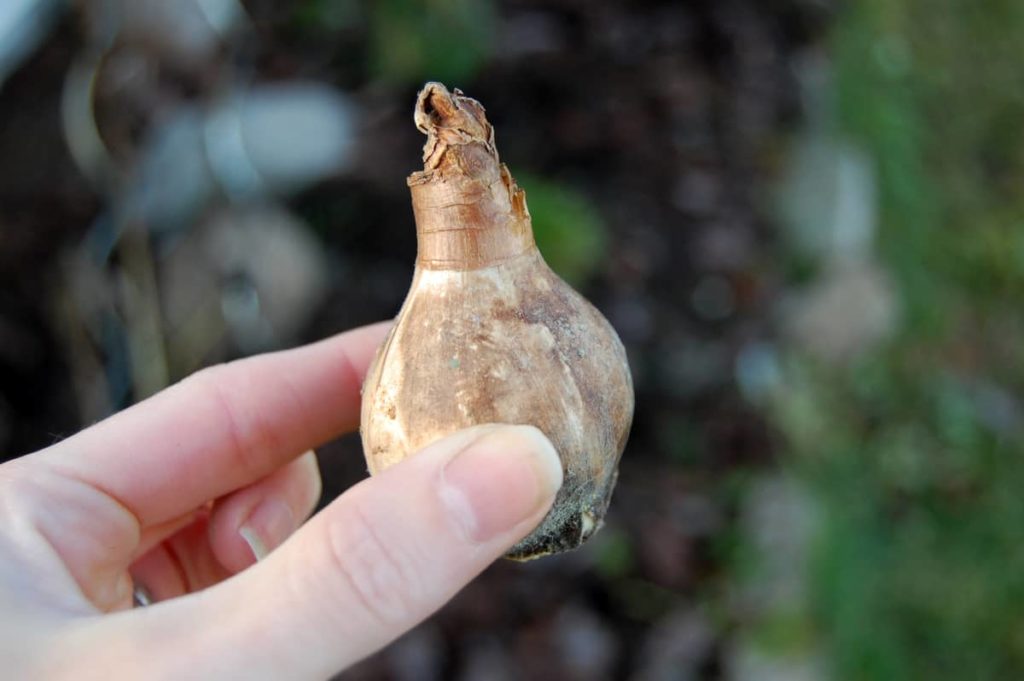
This fall is the perfect time to get ready for fantastic, beautiful spring blooms! An enormously satisfying way to enjoy the long winter months is by creating a spring-blooming garden to look forward to.
Just as the journey is half the fun, the anticipation of spring flowers might be one of the most enjoyable parts of fall and winter!
In fact, there is no better way to get a jump on early spring blossoms than with planting a beautiful spring-blooming bulb garden!
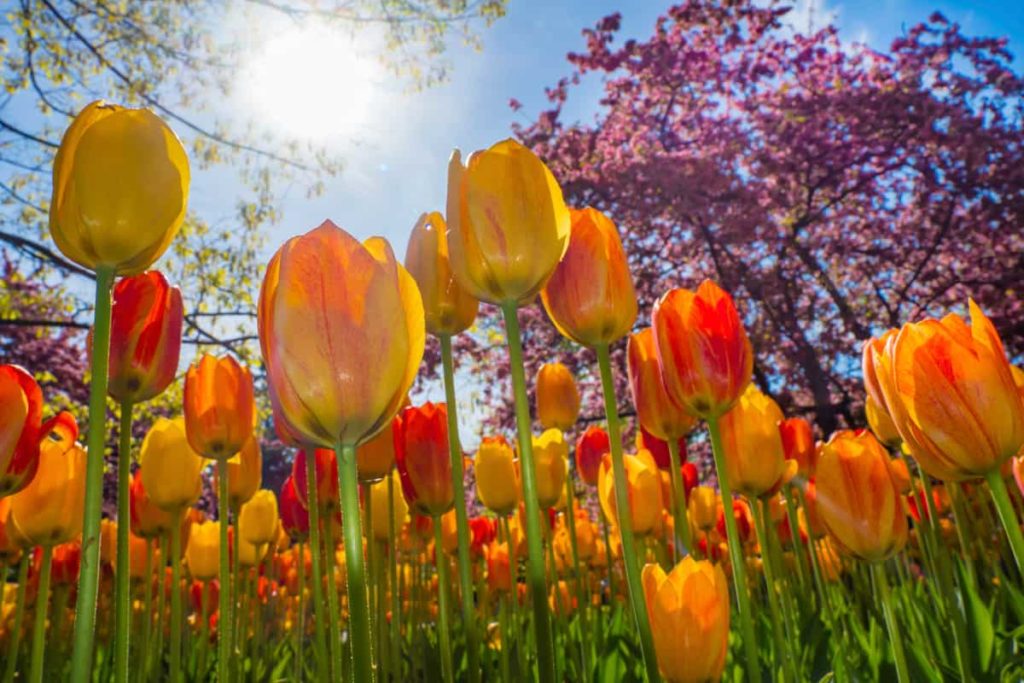
Hope Springs!
The very definition of hope lies in the planting of spring-blooming bulbs in the fall. Also known as winter-hardy bulbs, spring-blooming bulbs are planted once and bloom year after year.
There are entire gardens and parks devoted to these special plants. The gorgeous arrays of spring blooming flowers such as tulips, daffodils, crocus, and alliums are as memorable as they are diverse!
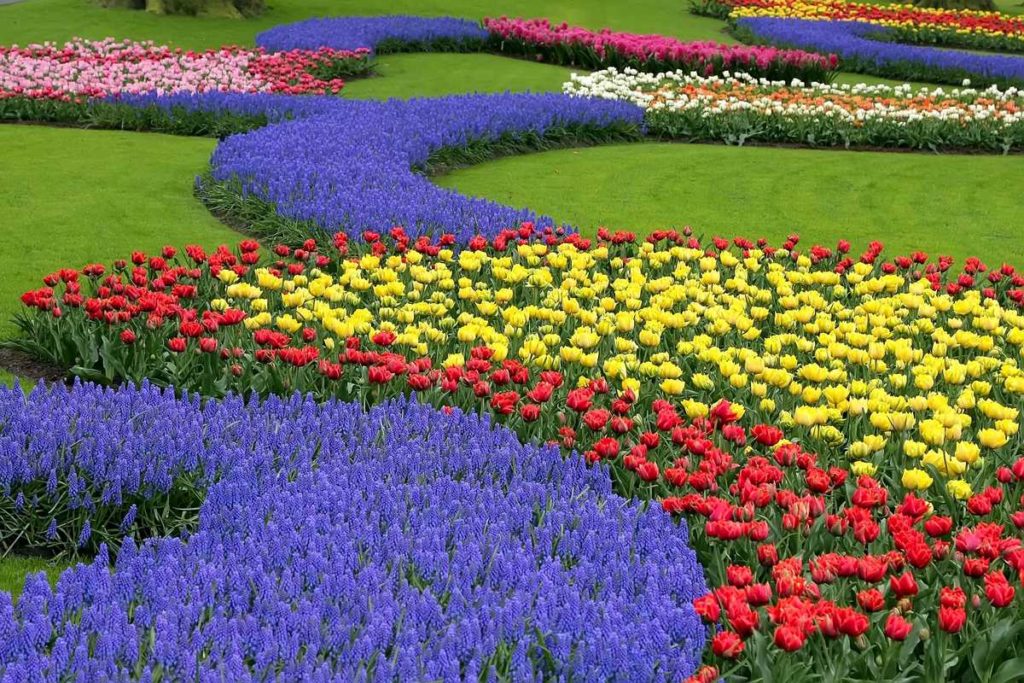
Get Fancy With It!
Yes, in some cases, spring-blooming bulbs are removed after blooming to make way for summer-blooming annuals or summer-blooming bulbs.
One reason for this is because they store well and are easy to handle compared to other types of perennials.
Another reason is that spring blooming bulbs go dormant after their foliage fades in late spring or early summer.
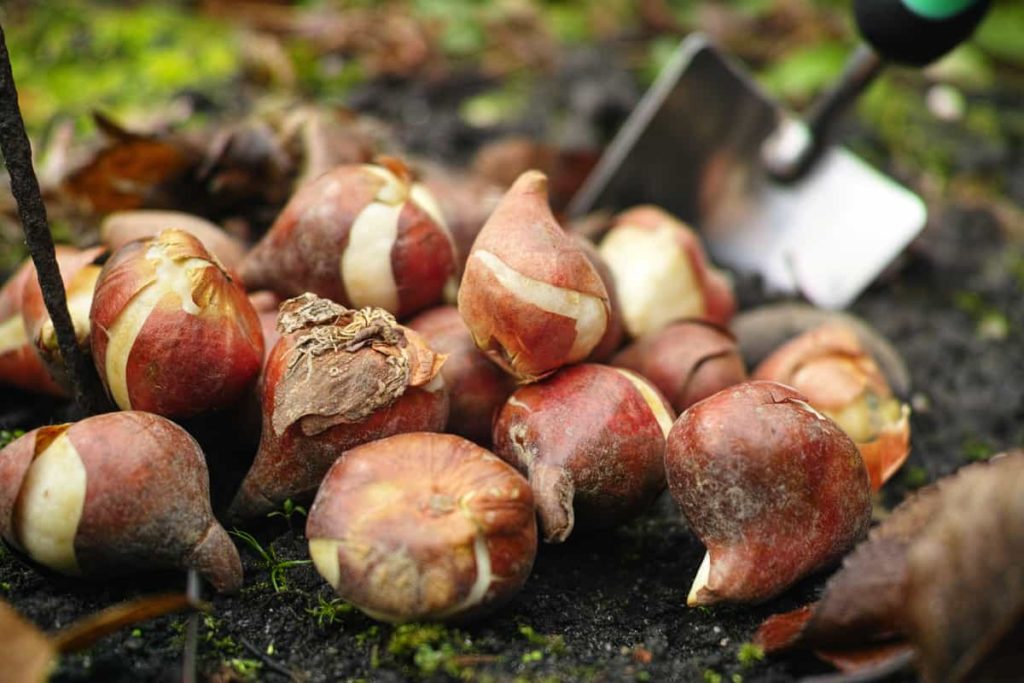
After that, they can be replanted in the fall for next spring’s flower show. Although labor intensive, if blooms are what you desire and space is at a premium, this is an ideal option.
Perennials that Naturalize.
Most spring-blooming bulbs are perennials. They can stay in place for many years.
Each spring they provide their best show. Many types of bulbs will naturalize. These may form clumps or colonies with masses of blossoms year after year.
A great way to use spring-blooming bulbs that will stay in place for many years is to interplant with other blooming perennials. In fact, spring-blooming bulbs are perfect additions to the perennial or shrub border.
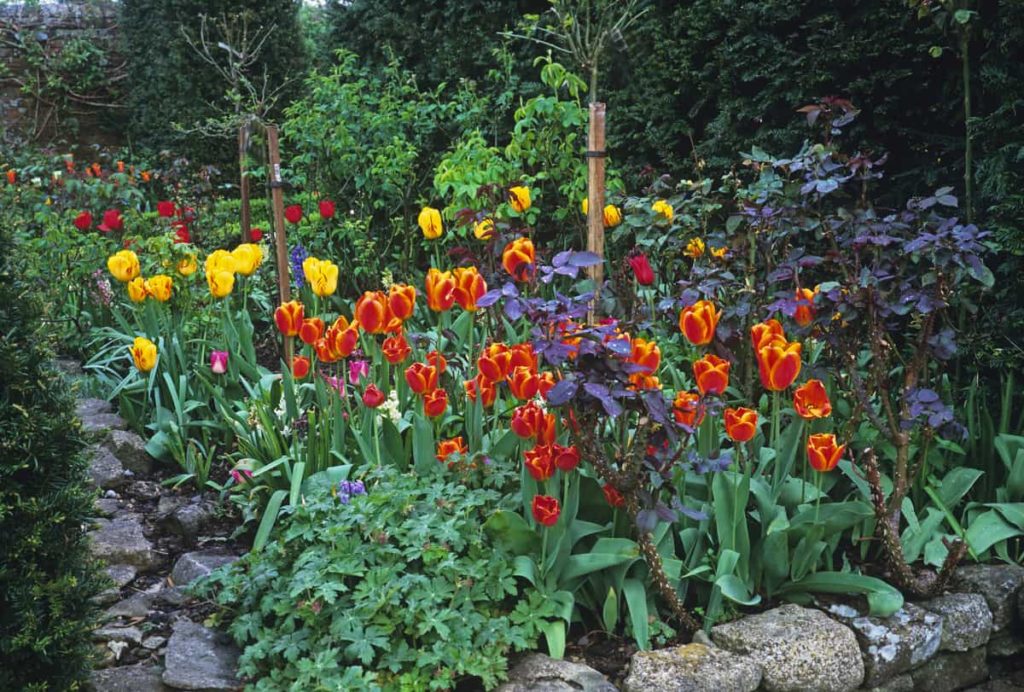
Spring That Burst With Color, Naturally.
Spring bulbs are an exciting gardening endeavor. Available in almost every imaginable color and shade, they also come in a huge variety of flower form, size, and bloom time.
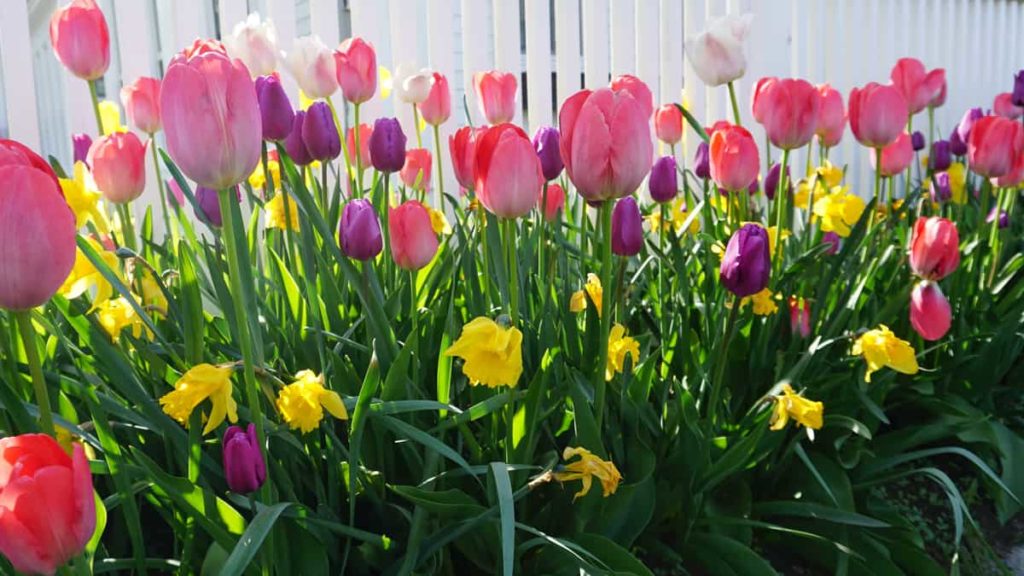
Spring-Blooming Bulbs Play Nice Together!
Use blooms that compliment or contrast each other for spectacular effect. A brightly colored short daffodil interplanted with a deep shaded tall tulip is just an example of the creative color explosion spring-blooming bulbs may have in store.
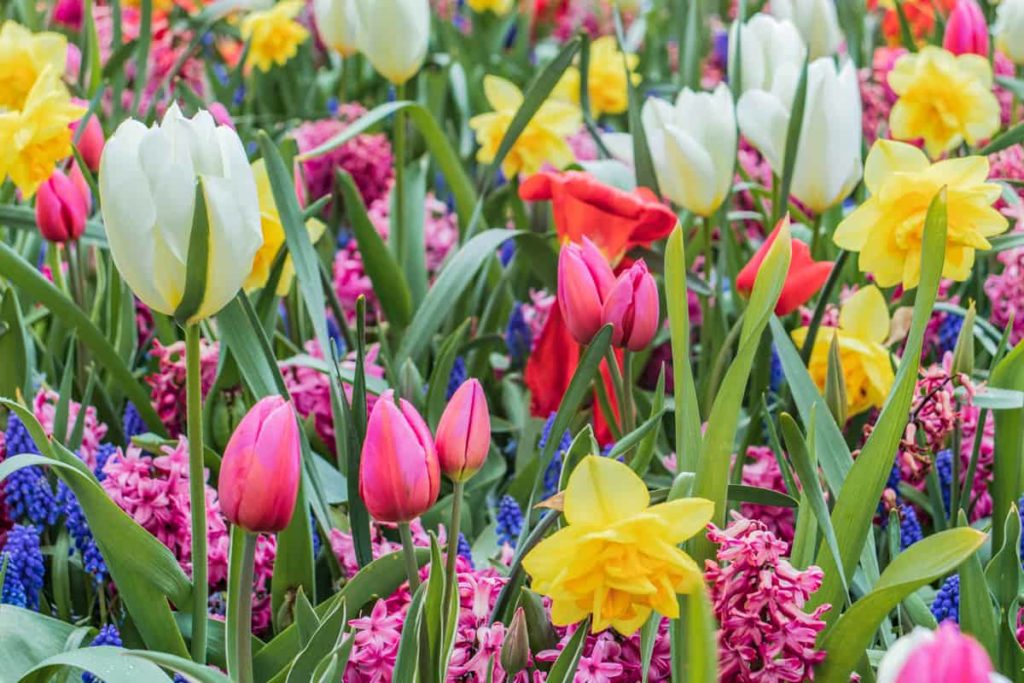
Success with A Succession of Blooms
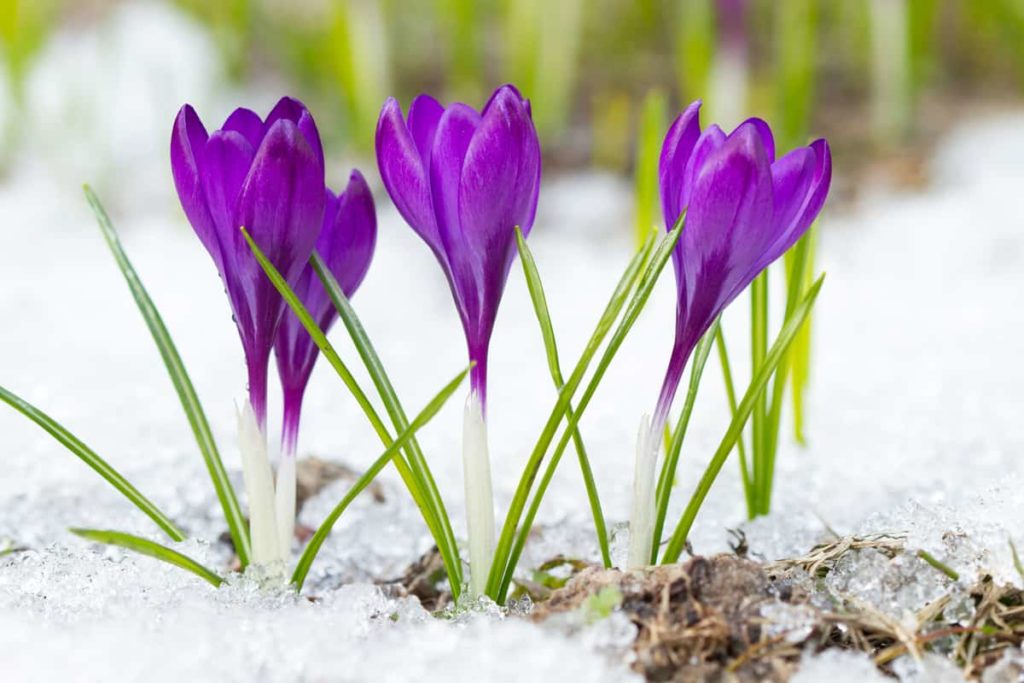
A carefully planned spring garden might have crocus blooming before the snow is even gone, and still have tulips blooming to welcome in the late spring-blooming lilacs and peonies.
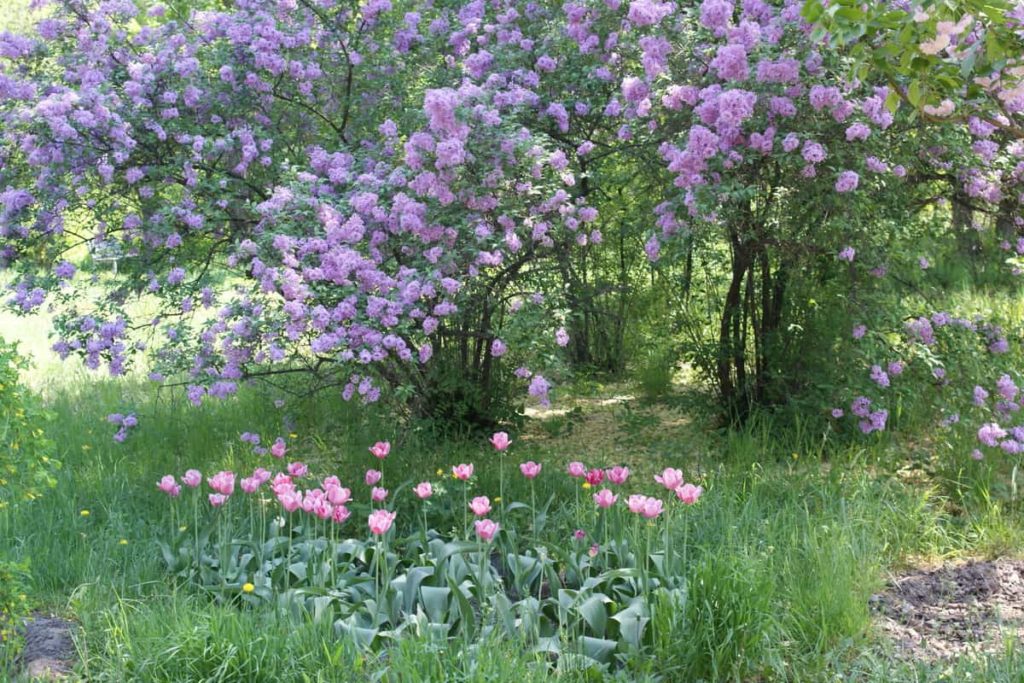
Your Best Spring-Blooming Bulb Garden – What to Do In Fall and When to Do It
Spring blooming bulbs are best planted in the fall 2 to 6 weeks before the ground freezes. Individual bulb types and cultivars will have planting instructions. Generally, most types of spring blooming bulbs will thrive in well-draining soil in full to part sun.
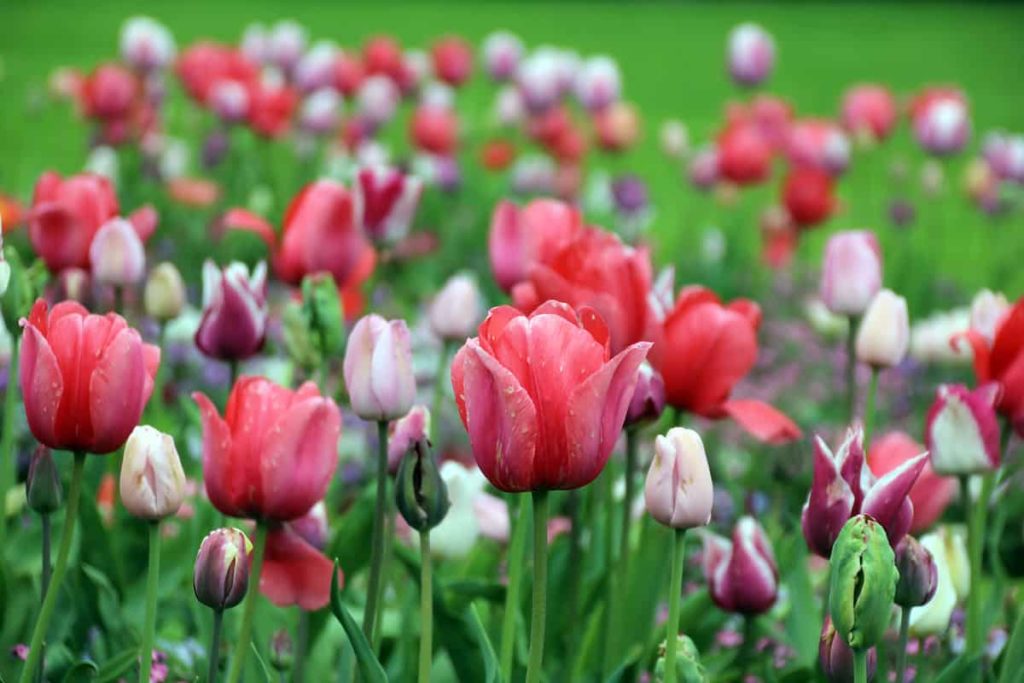
Importantly, after the spring flower show, try to leave the leaves in place for as long as you can. They can be a bit messy but leaving them helps feed the underground bulb. The bulb will thank you with their gorgeous blossoms next spring!
Two Choices After the Spring Bloom Has Ended.
- Trim off those blossoms. Many spring blooms make perfect cut-flowers. Removing the bloom gives the plants’ energy back to the bulb, making it larger. This helps future blooms and might create even larger flowers.
- The second choice is to leave the blooms in place. This signals the bulb to reproduce. This is an excellent choice if the hope is to allow the bulb to naturalize as it will make new plants this way. Aside from some watering and tidying if desired, not much really needs to be done, except be ready for next spring’s blossoms.
7 Flowering Bulbs To Plant In Fall For Beautiful Spring Blooms
1. Crocus (Crocus spp.)
The earliest of the spring blooming bulbs, crocus can even peak up through the snow. The charming, short little plants are exuberant in early foliage and flowers.
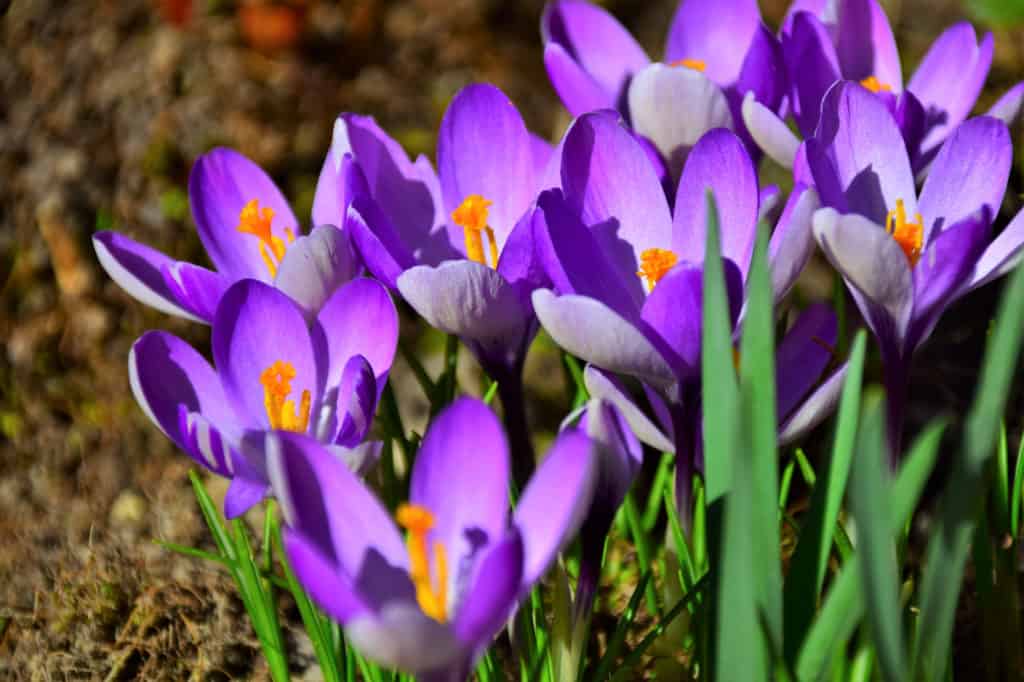
Hardy in zones 3 to 8, thriving in full sun to part shade in well drained soils. They are resistant to deer damage, make excellent cut flowers, and are perfect for naturalizing too!
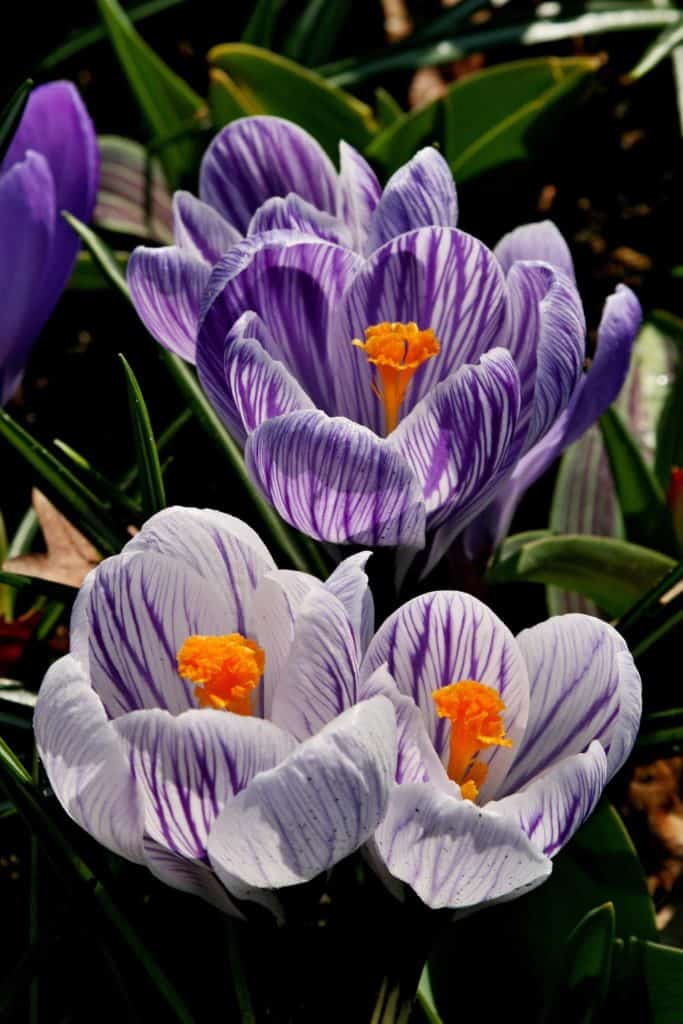
A large genus of plants, spring-blooming crocus favorites are Crocus vernus, or Giant Crocus and C. chrysanthus, also known as Snow Crocus.
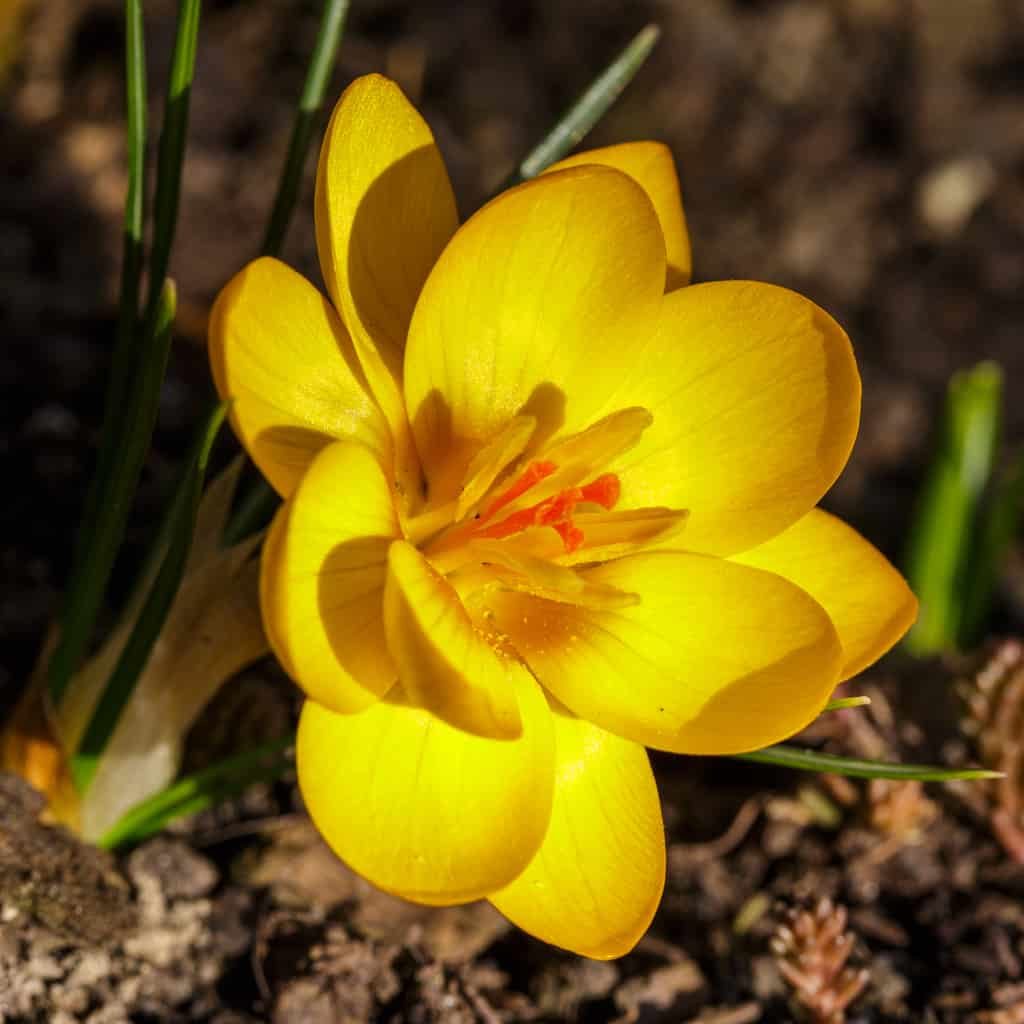
2. Daffodil (Narcissus spp.)
The variety of choices when using daffodil is nearly endless. Some are fragrant. Some have intricate, double blooms. They bloom in early, mid, or late spring in a variety of sizes from incredibly dainty to stout and dynamic. Spectacular when planted in large groups. But equally enticing poking up ahead of later blooming flowers, shrubs, and trees.
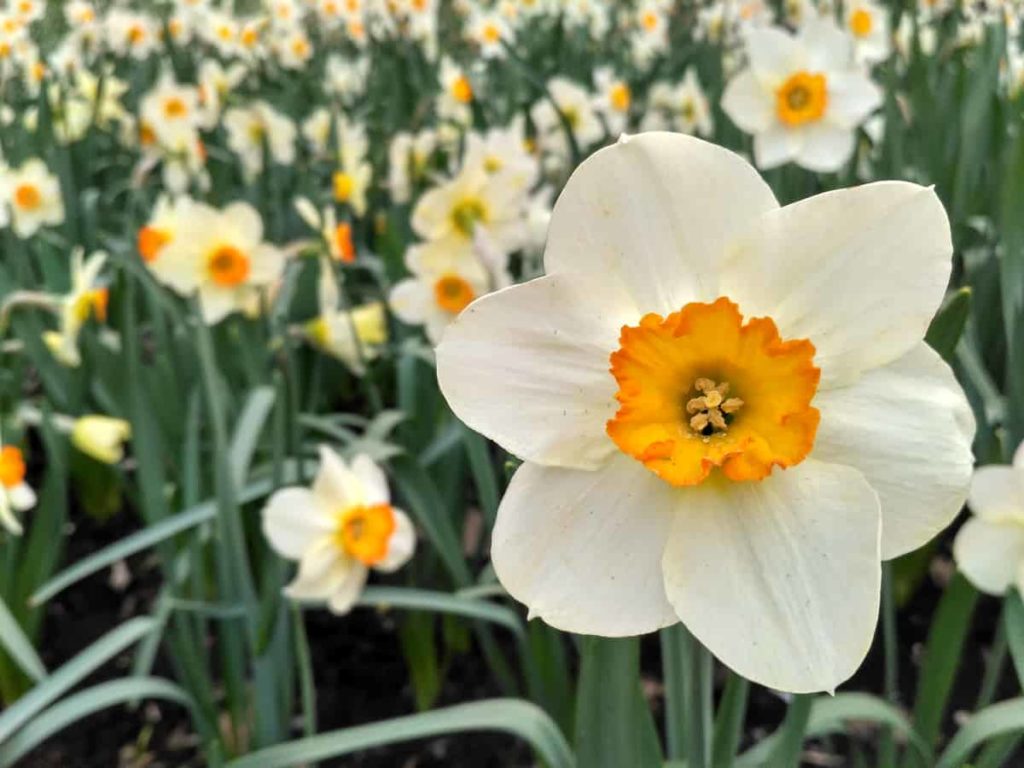
Hardy in zones 3 to 9, with blooms in whites, yellows, and oranges. Daffodils thrive in full sun to part shade in well drained soils.
They are excellent to plant near less deer resistant plants such as tulips, as deer tend to detest daffodils. Easy to grow, easy to love! Daffodils naturalize quicky and make excellent cut flowers.
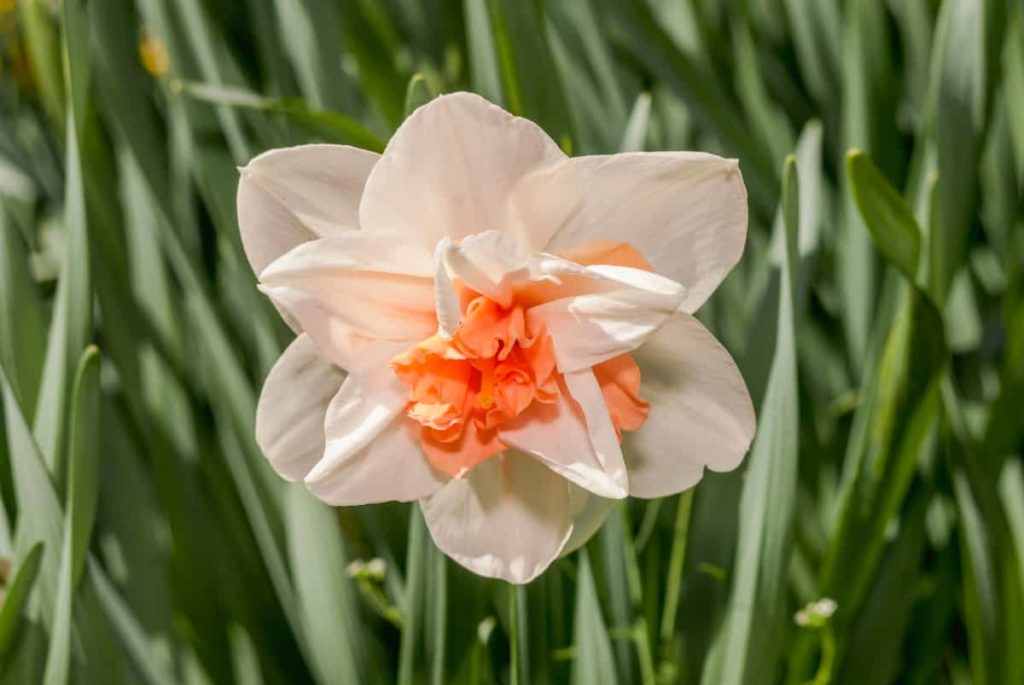
A complicated genus of plants, Narcissus species are Daffodils and Jonquils, with Jonquils being more fragrant and daffodils tending to be hardier.
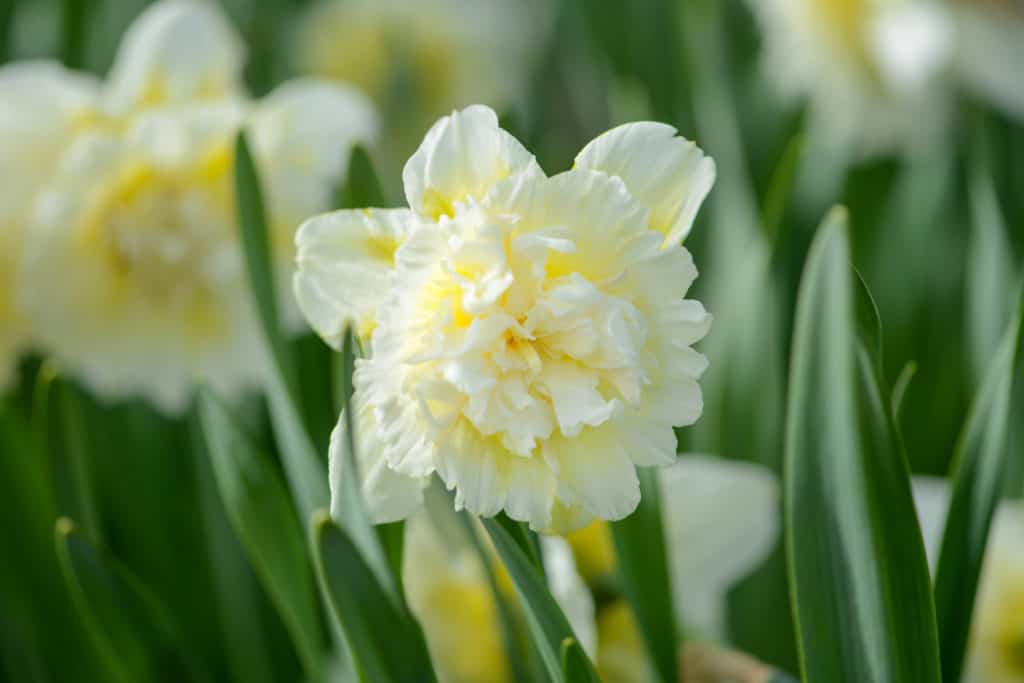
Some favorites are Ice King, a white-on-white double flowered variety, Dutch Master, a perfect trumpet of golden yellow, and Juanita, a petit variety with an orange trumpet perfectly framed by white petals.
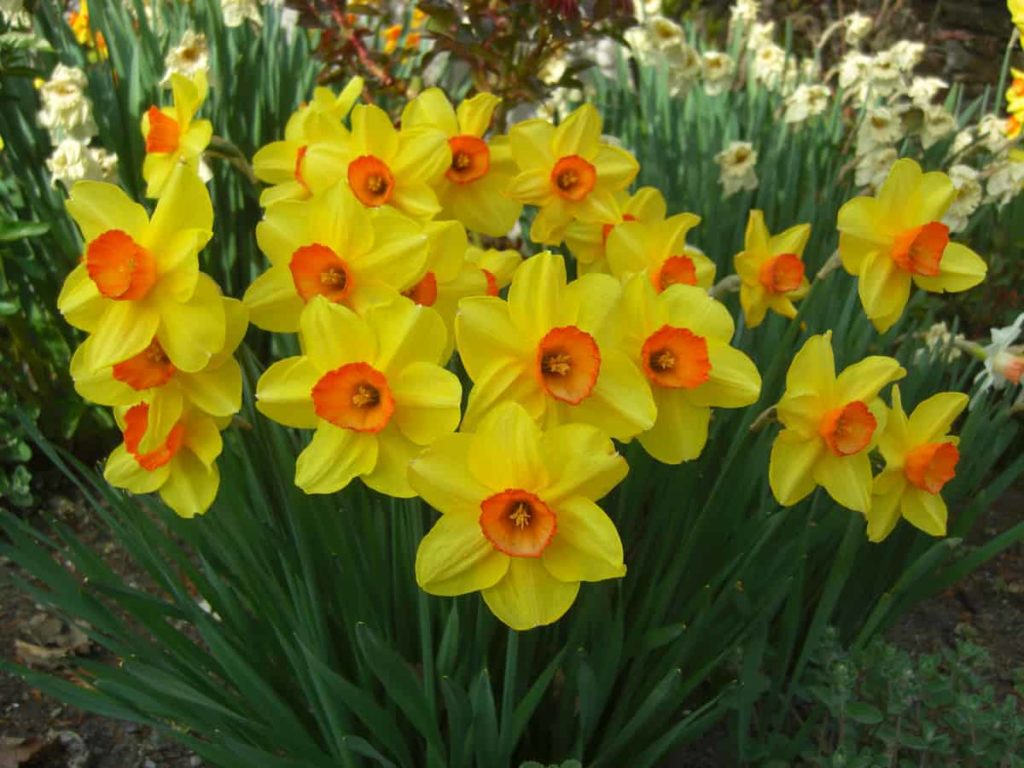
3. Tulip (Tulipa spp.)
There is only one way to say it. Tulip is Queen when it comes to spring-blooming bulbs! With festivals celebrating this vibrant flower the world over, Tulip has over 3000 registered varieties.
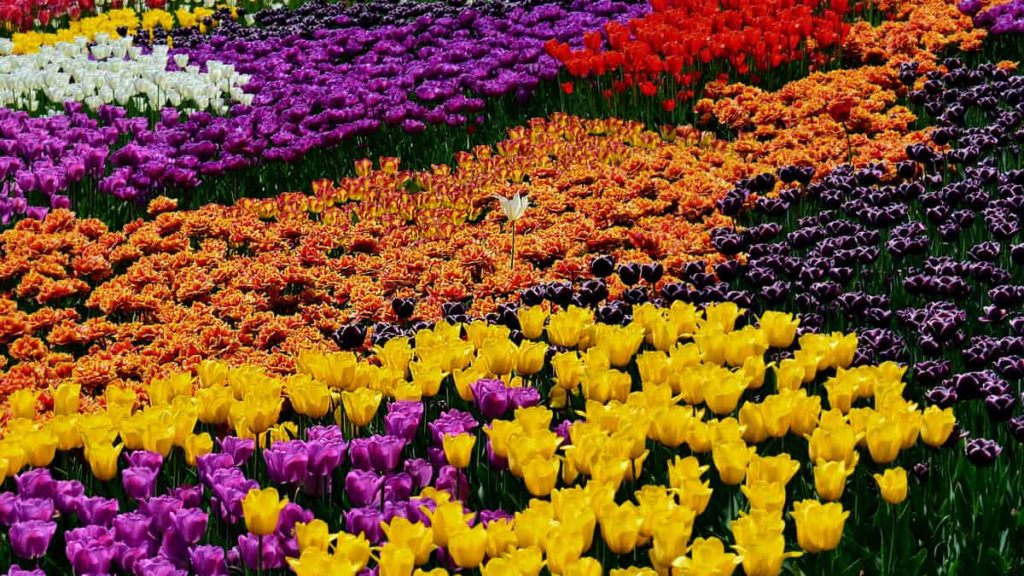
The parade of tulip varieties is extensive! From dainty and petit species varieties to plants with giant 8-inch flowers, tulips also come in a magnitude of colors, shapes, and sizes.
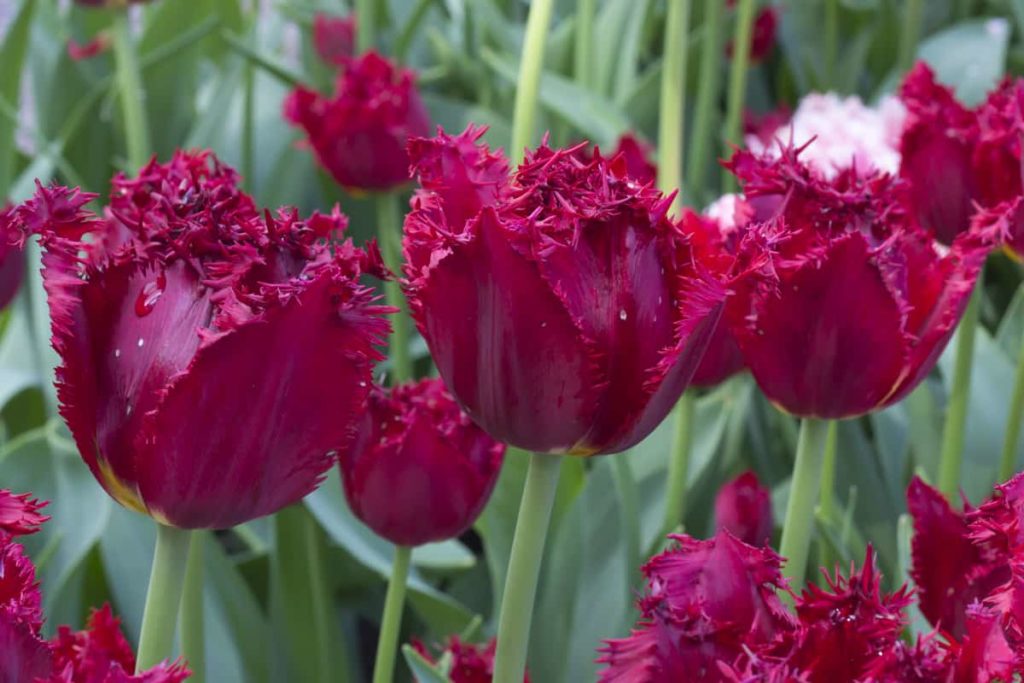
Hardy in zones 3 to 8, tulips are available in shades that not only rival the rainbow but the sunrise, sunset, and the midnight moon. Tulips too thrive in full sun to part shade in well drained soils.
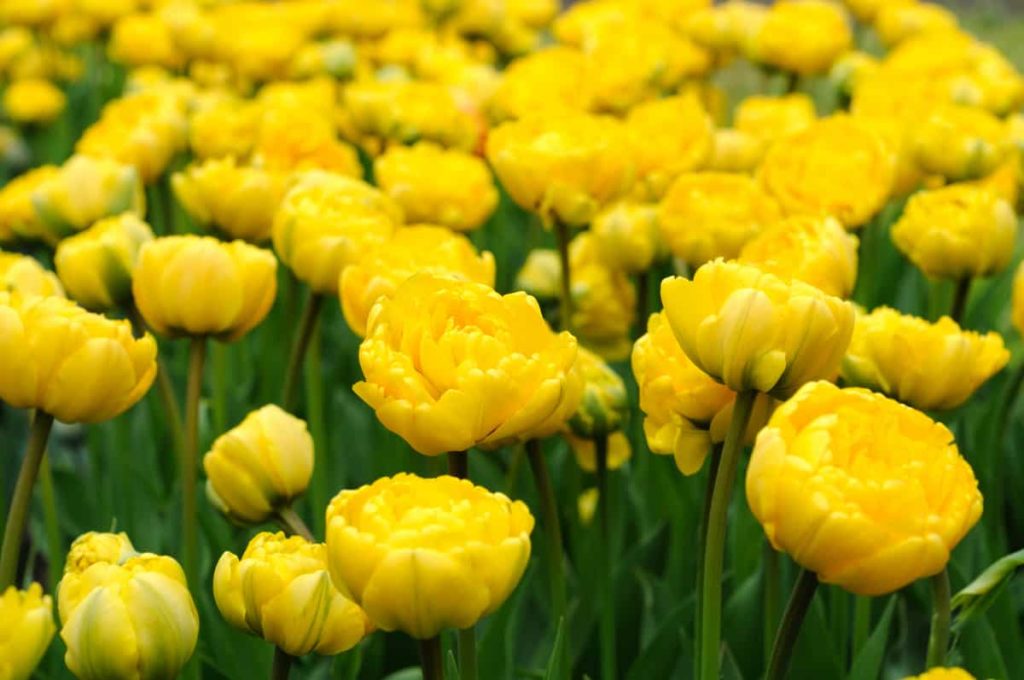
A multitude of tulip styles include early, mid, or late spring blooming with single or double flowers. Their shapes range from bowl shaped to lily shaped. There are fringed, bicolored, short, tall, multicolored, and even parrot varieties.

4. Scilla (Puschkinia scilloides var libanotica)
Move over lily of the valley, here is a plant that might be even sweeter! Scilla, also known as striped squill grows to just 4 to 6 inches tall.
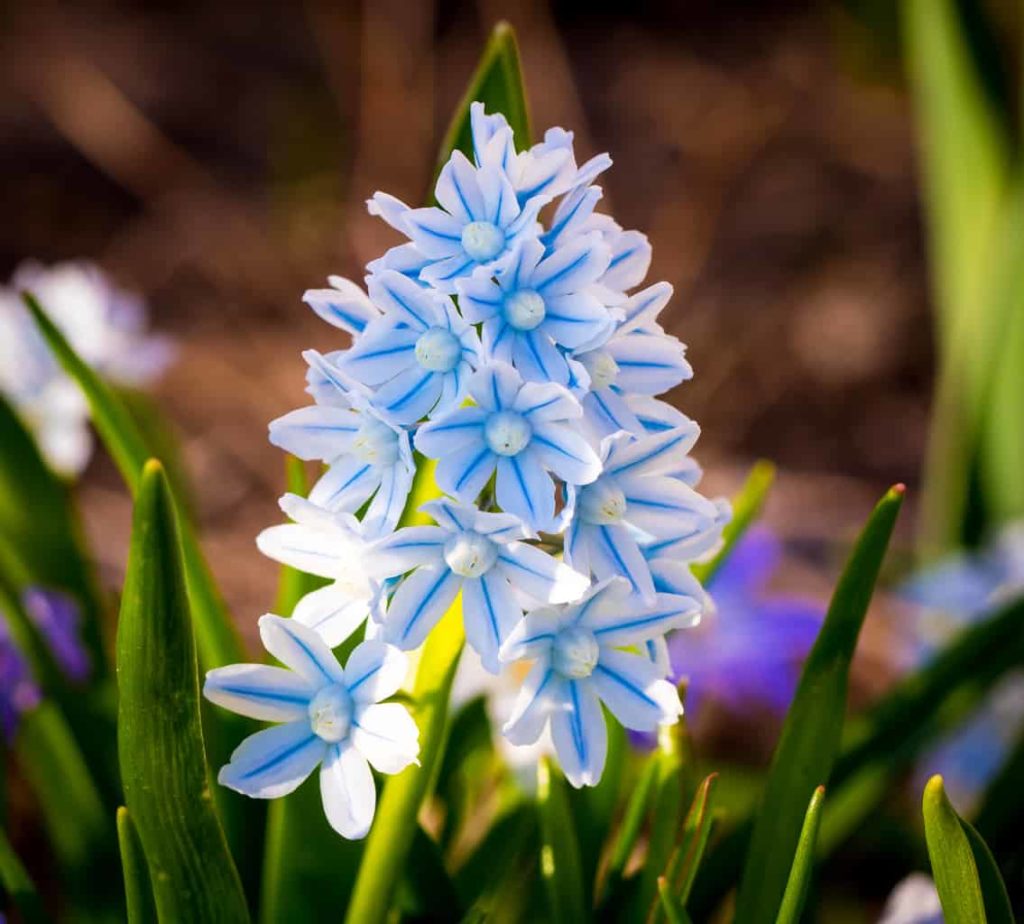
The fragrant blooms are produced in mid spring and are hardy in zones 3 to 9. These gorgeous little beauties naturalize well in full sun to part shade. As other spring blooming bulbs, they thrive in well drained soils.
5. Hyacinth (Hyacinth orientalis)
The anticipation of the midspring fragrance of flowering hyacinth begins well before the onset of winter. Perhaps as early as the last bloom fades in late spring. This midspring-blooming bulb smells as good as it looks!
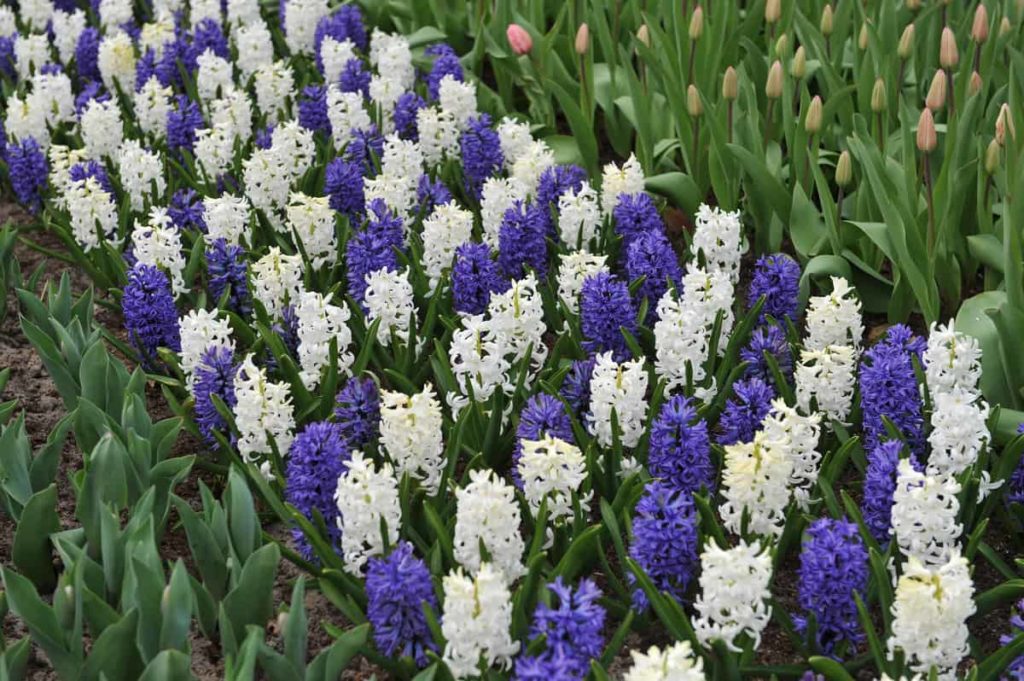
Hardy in zones 4 to 8, these plants deserve a little extra care. They are susceptible to rot so require extremely well drained soil and full sun.
With a gorgeous array of springtime colors, including pinks, blues, violets, white, red, orange, and yellow, hyacinth are certainly festival worthy as well.
6. Grape Hyacinth (Muscari armeniacum)
Grape Hyacinth or Muscari is like Hyacinth’s adorable little brother, arriving just in time to steal the show. The unique tiny grape-like flowers make a wonderful show when grown in large groups or planted with taller contrasting colored midspring blooming bulbs.
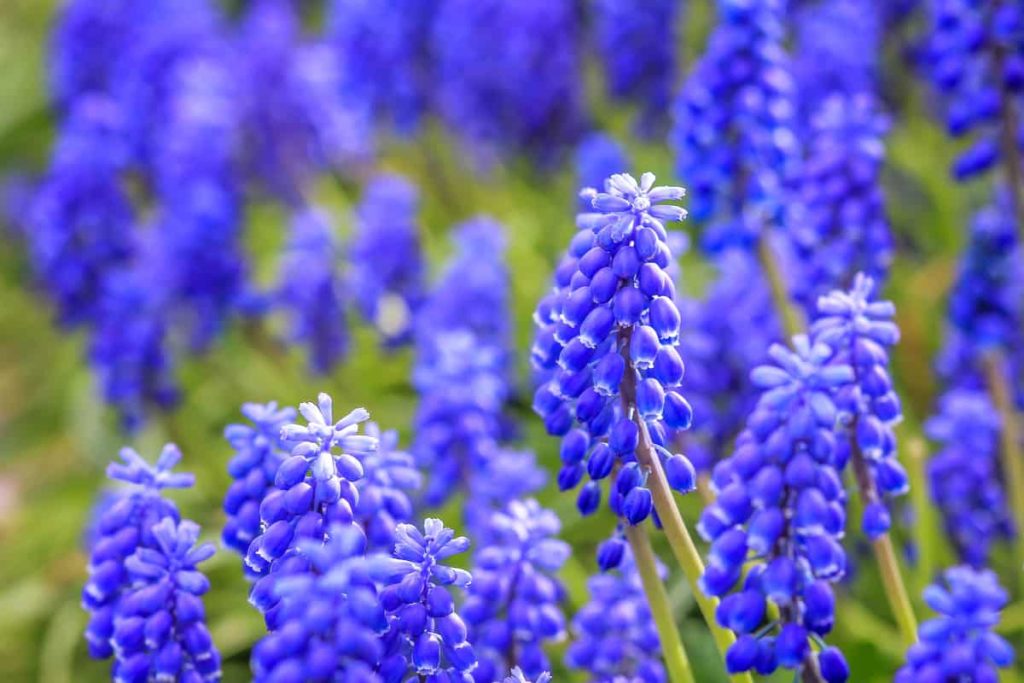
They naturalize with wonderful ease in hardiness zones 3 to 9. Muscari love well drained soil and bloom their best in full sun.
7. Fritillaria (Fritillaria spp.)
Fritillaria add a tropical flare to the spring blooming garden. Often, their color palate is on the hot side in reds, oranges, and yellows. Although, these unique spring blooming bulbs are surprisingly cold tolerant.
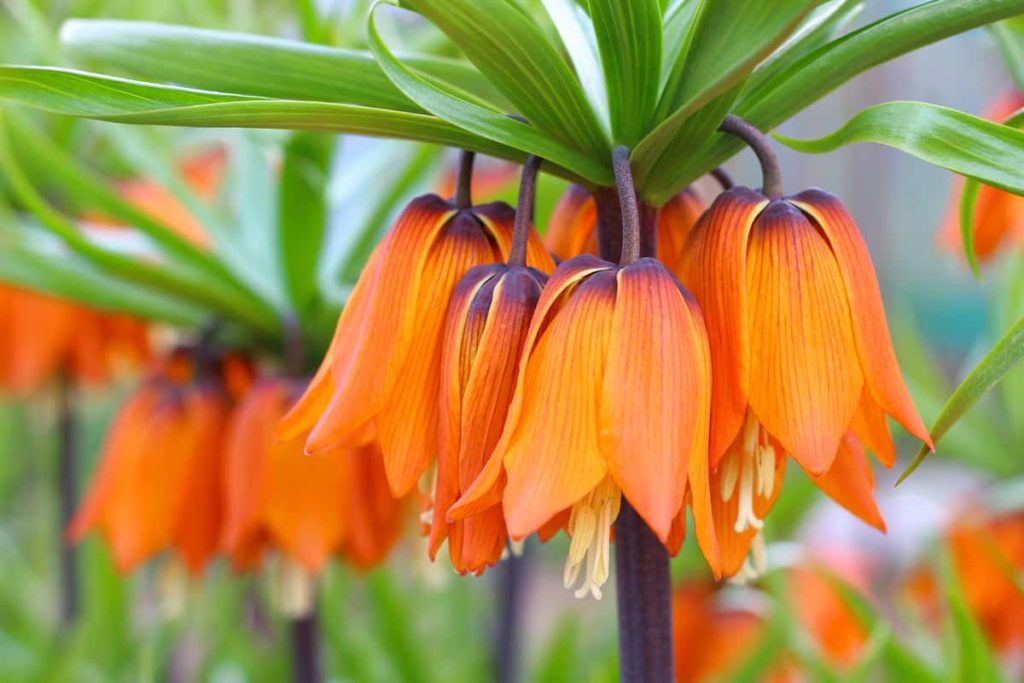
With hardiness in zones 3 to 7, fritillaria bloom in midspring. They might outcompete exotic lilies and other awe-inspiring spring-blooming plants.
8. Allium or Ornamental Onion (Allium giganteum)
Stand out in a crowd! Giant Alliums are statement plants in their own right. They are also a great way to finish off the spring-flowering bulb season. Some alliums bloom in late spring, others might crossover into early summer.
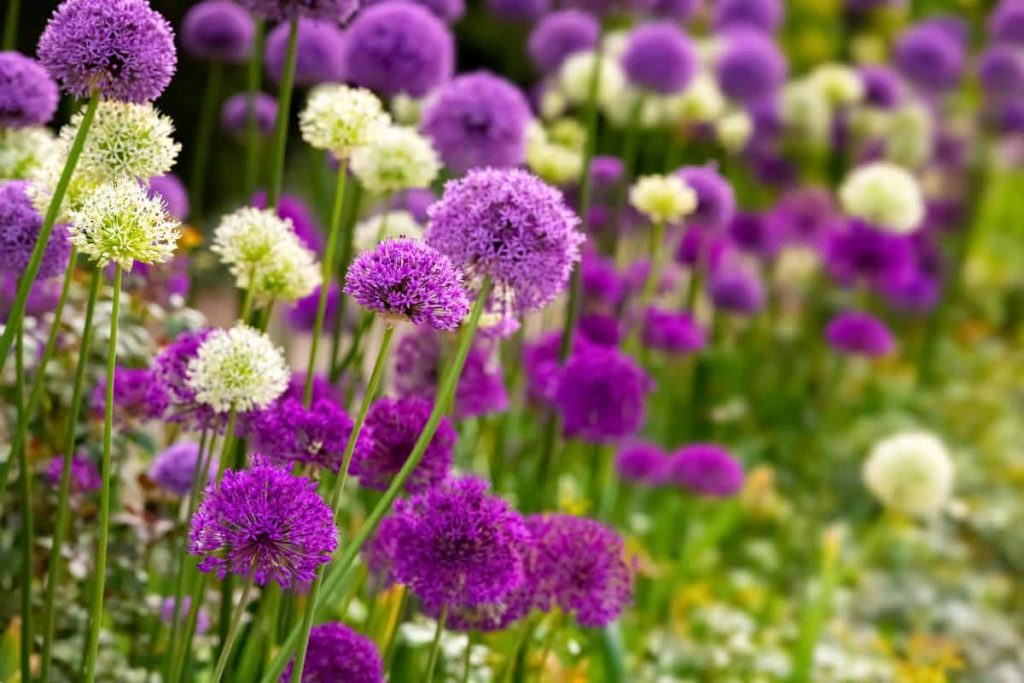
Easy to grow and extremely attractive to bees and beneficial insects. And yes, they are of the onion family. This helps to make them deer and rodent resistant.
Ornamental onions are hardy in zones 4 to 8. They love well drained soils and thrive in full sun to part shade.
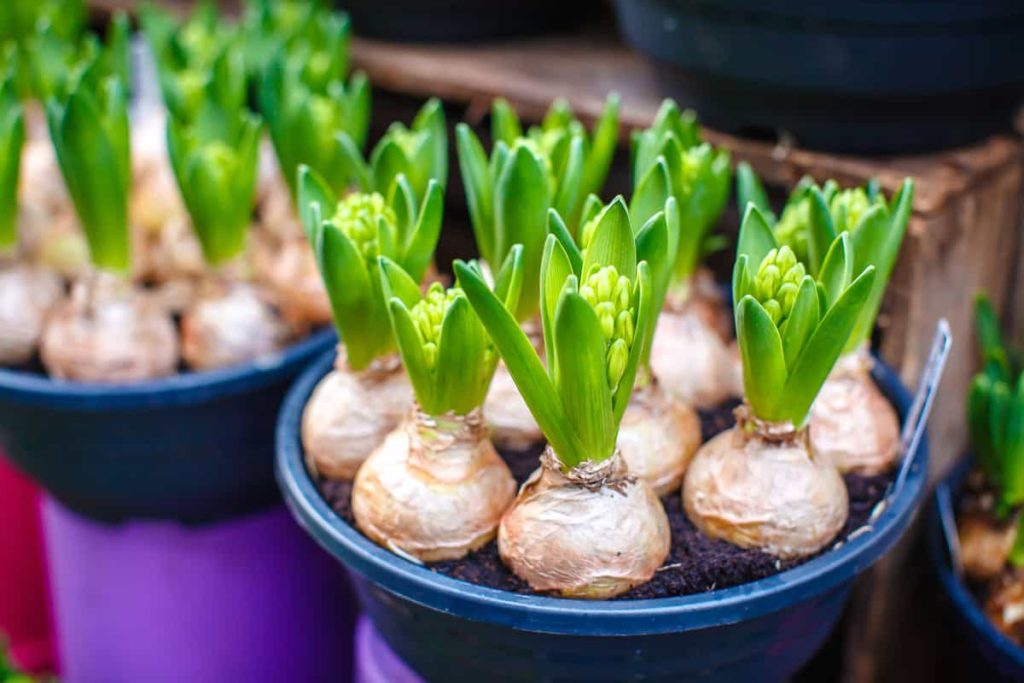
The hopefulness of next spring’s blooms is enticing. This fall, dedicate a little time to planting some spring-blooming bulbs to get a jump start on next year’s flower season. Winter will fly by with the anticipation!
And if you’d like to learn a clever trick to get spring blooming bulbs to bloom in the depths of winter, then take a look at our article here.
